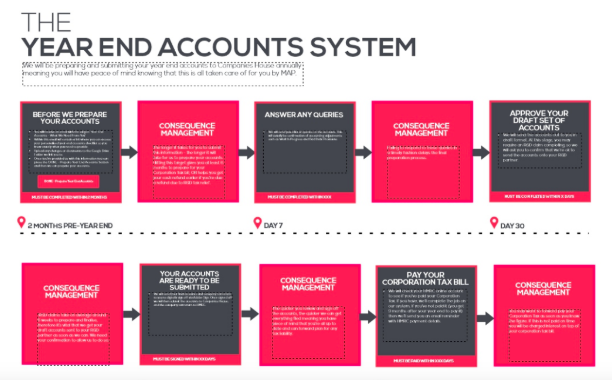 We’ve talked about what to do when communication goes cold after you send a proposal.
We’ve talked about what to do when communication goes cold after you send a proposal.
But what if you get ghosted by an existing client in the middle of your work with them?
You’re past the sign-up. You found the right solution to their problem. The work has kicked off and everything is going smoothly as far as you’re concerned.
Then all of a sudden, they disappear.
Everything goes quiet, you start to panic about unpaid invoices, and you’re left wondering what you could have done to prevent this the client from going AWOL.
Client ghosting can feel more confusing and personal than proposal ghosting, but the principles of how to prevent it are very similar.
First things first, don’t make assumptions
Or if you’re going to make any assumptions, make them positive ones.
Outside of being your client, remember you’re talking to a real person, with a whole entire life outside of their business. We all know what it’s like to hit a bump in the road we didn’t see coming.
Although you don’t want to let everyone off the hook from their responsibilities, you do want to be mindful of the fact there could be a much deeper issue here having nothing to do with you.
Be honest at the start of your relationship
Ask yourself ‘How prepared am I for the possibility of a client dropping off the earth?’.
It seems a strange thought. How can you prepare for the unprepared?
Use this situation as a learning curve, and be completely honest with the next client you onboard.
Set the expectations from the get-go by establishing:
- The process of working with you as a firm
- What a professional relationship means to you and how you conduct it
- What your clients can expect you to get done, and what you expect from your clients to be able to get it done
You can even make a point of stating:
- Sometimes, life gets in the way
- Sometimes mistakes happen
- Sometimes the relationship just doesn’t work
You can cover these things in:
- Your client onboarding process – you could have a landing page like Raedan has here.
- Your brand book or manifesto – you might create a PDF. Here’s a great example from The Designer CPA.
- A ‘How we work’ page on your website, like this one from Stubbs Parkin.
Once you’ve made the statements, tell them how you plan to combat all three.
Explain what you will do to prevent ghosting
You’ve addressed the facts and faced the hard truths head on. Life doesn’t always go the way we plan and sometimes us mere mortals make mistakes.
The next step is to let your client know what you plan to do to prevent these situations from happening.
- Ask your clients to tell you when things go wrong – Your client may be afraid of telling you that they’re unhappy. Simply asking someone to tell you when things go wrong, and showing them you’re not afraid of constructive criticism, frees your client from that fear and protects you from an incommunicado situation.
- Set specific expectations for client/project management – How often will you have calls? How long will they be?
- Set out clear pricing and payment terms – From the point of proposal all the way through the onboarding process, be clear on your payment terms. Lay out specifically what will happen, and when, if those terms aren’t met.
- Apply and communicate the appropriate consequences – Prepare the client with consequence management. ‘If you do this, this is what will happen, and this is what the penalty or cost will be’. MAP manage their client’s expectations really well by using consequence management in their onboarding brochure:

Do what you say you’ll do
I once heard a story about a parent who had reached the end of their patience with their screaming child.
In a burst of frustration they gave the ultimatum:
“One more time and I’m throwing your Playstation in the bin”.
When ‘one more time’ actually happened, they felt slave to their promise. It was either lose the playstation or lose authority in the lesson about consequences. So sure enough, begrudgingly, into a bin bag went the playstation.
Your clients aren’t your children, but if you make a professional promise, the same rules apply.
If you feel you were responsible for the breakdown in communication, hold true to the promises you made early on about fixing things. James Ashford shared a great video on the power of accepting responsibility for everything – check out his ladder of responsibility.
- If your client is having a hard time personally, hold true to your promises to be gracious and do whatever you can to keep the work flowing.
- If there’s a penalty or cost to missed work or unpaid invoices, hold true to following up on those consequences.
Just remember you’re holding yourself and your client accountable to the agreements you made early on, not blaming or punishing.
Most importantly, be patient and keep going. Keep doing the things you said you’d do. Keep fixing. Keep holding up your end of the bargain. Keep working at getting that relationship back on track, so that if they come back after a break and they’re ready to commit – the reuniting is positive and productive.
Be willing to end the relationship as a worst case scenario
If you’ve tried everything you can try, and you’ve been patient with the problem, be prepared to call an end to the relationship.
When it comes to the end, we inevitably think about the beginning. You may ask yourself whether the client was ever the right fit for your values. You may also be tempted to blame yourself, going through ‘shoulds’ and ‘if only’s’.
Go back to the drawing board and look at your pre-onboarding qualification process. Look at what YOU have responsibility for.
Were there any red flags you’d like to have noticed earlier? Think about all the questions that would qualify the right kind of client for your firm, and note them down.
These can be good questions to incorporate into your contact forms and diagnostics at the point of enquiry.
Example: “Are you a ghost? [Yes/No]”.
Okay, this exact question won’t work – but asking the right questions specific to your values, and your way of working will help you to determine if the client is a right fit.
So when it comes to keeping a client relationship warm, prepare for the unprepared from the get go. If you do find yourself dealing with a ghost, you’ll know you’ve done everything you can to be true to yourself, your client and your process.
Plus anything you learn from the situation can be used to improve the client experience, drawing more loyal and qualified clients in the land of the living.

